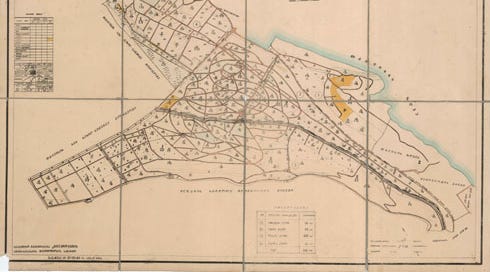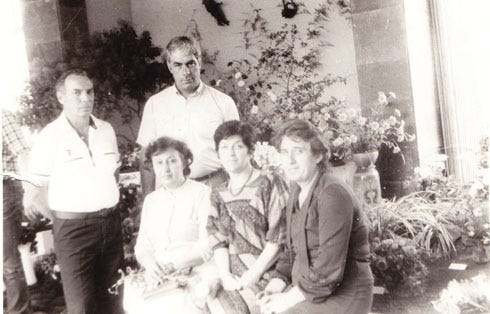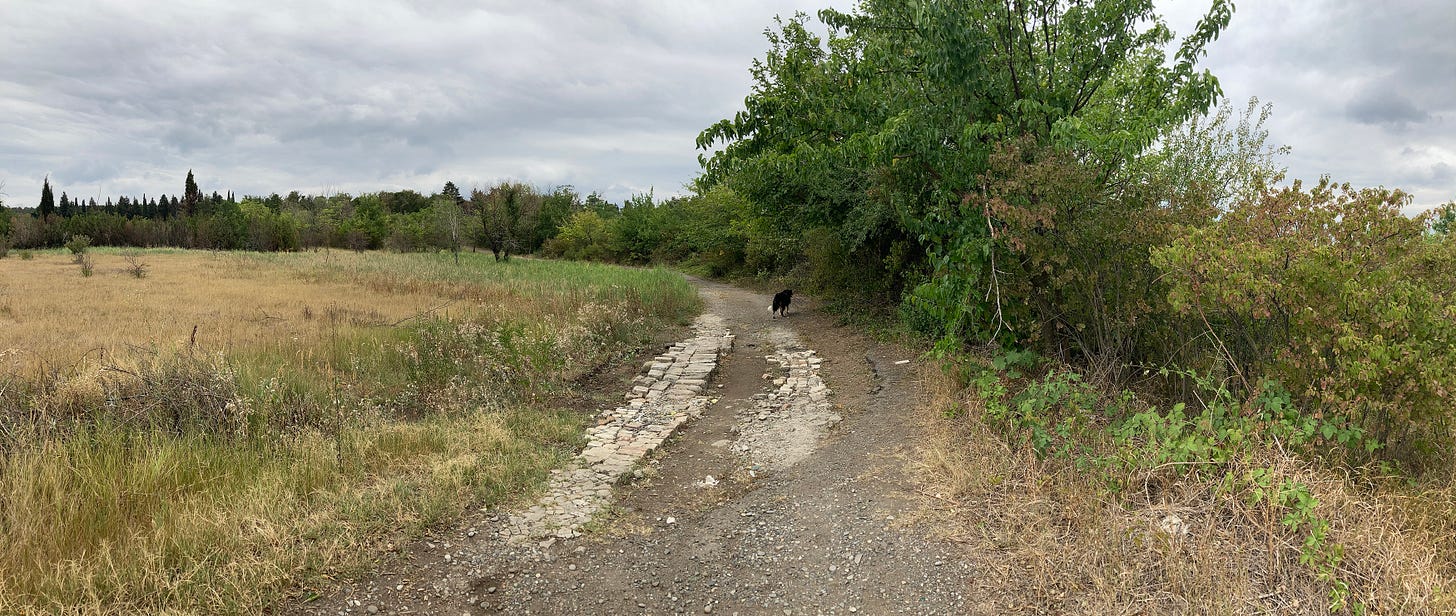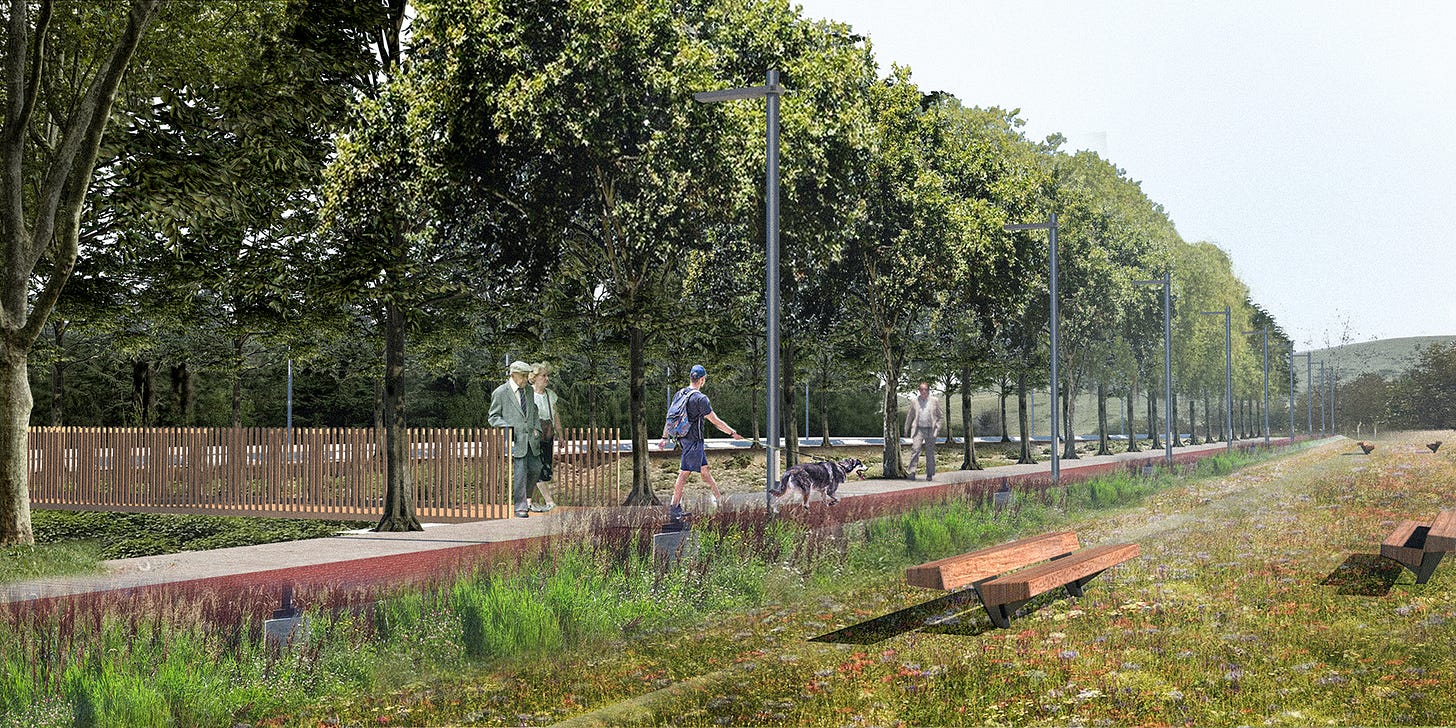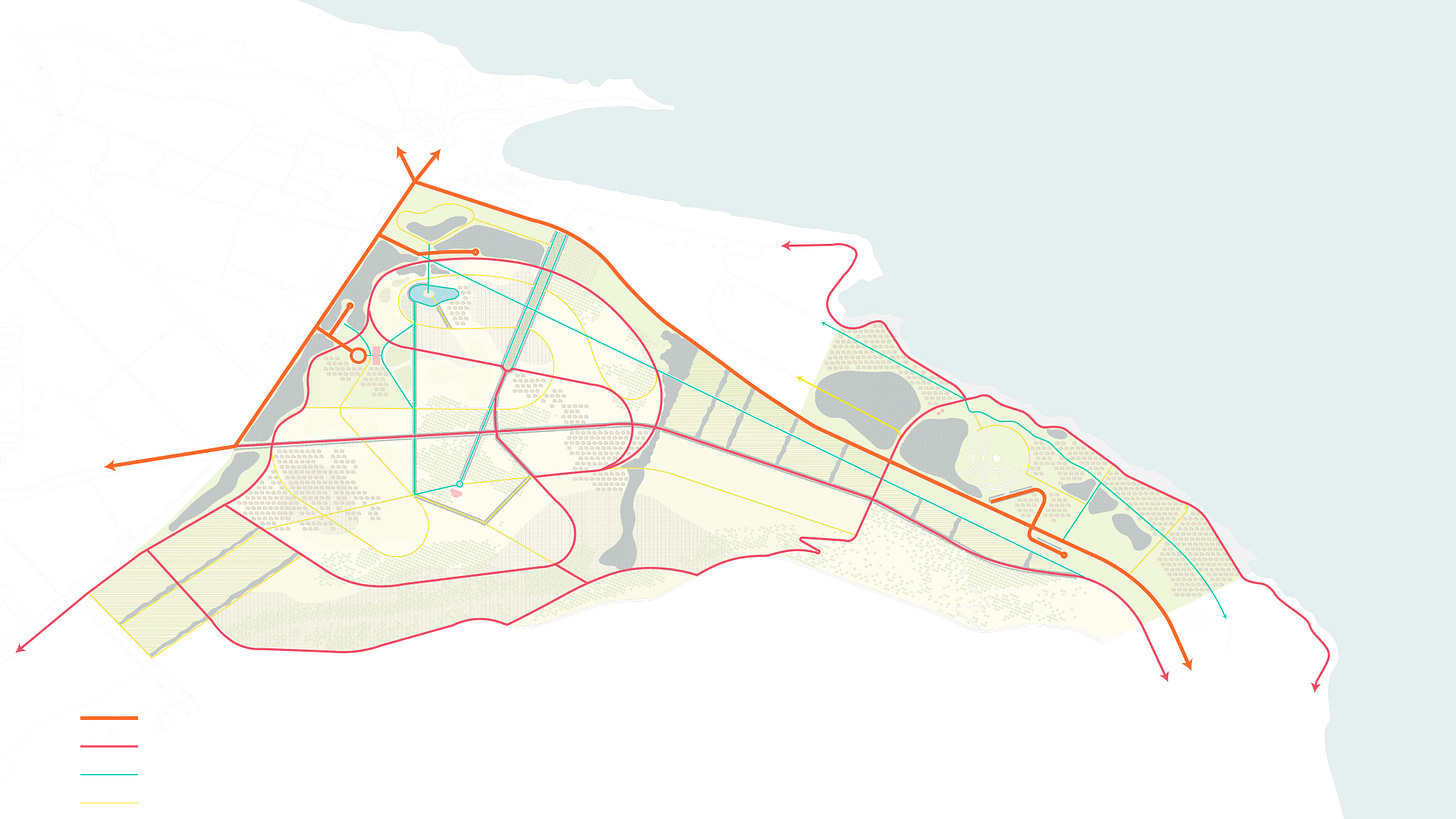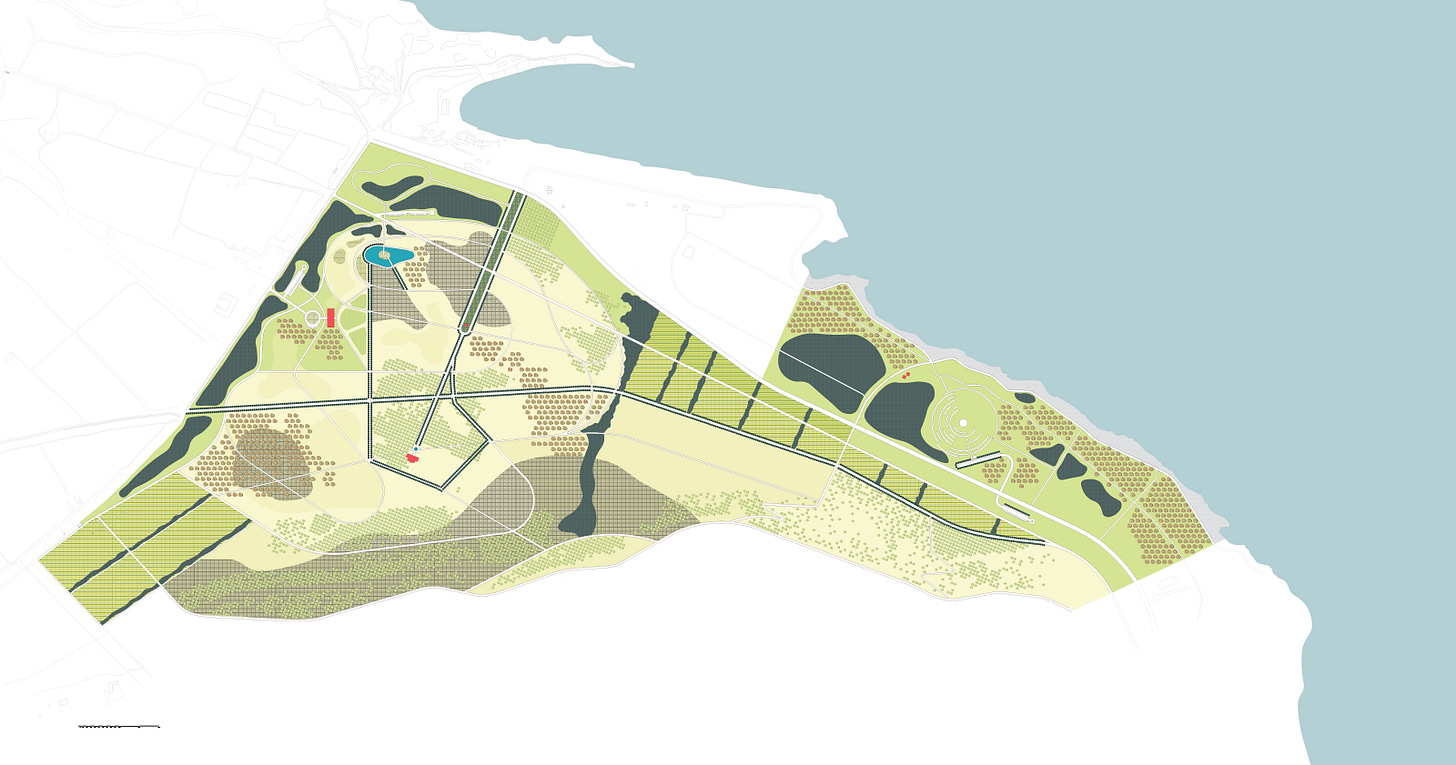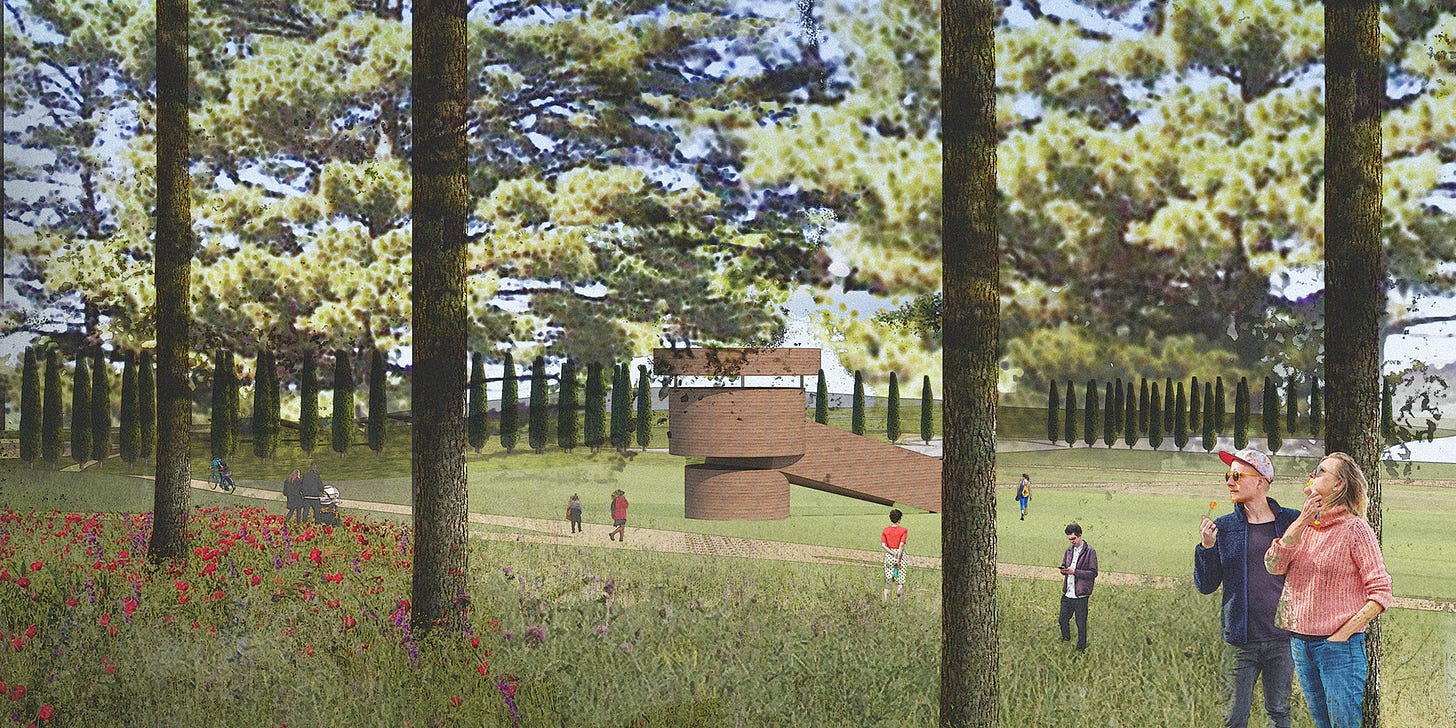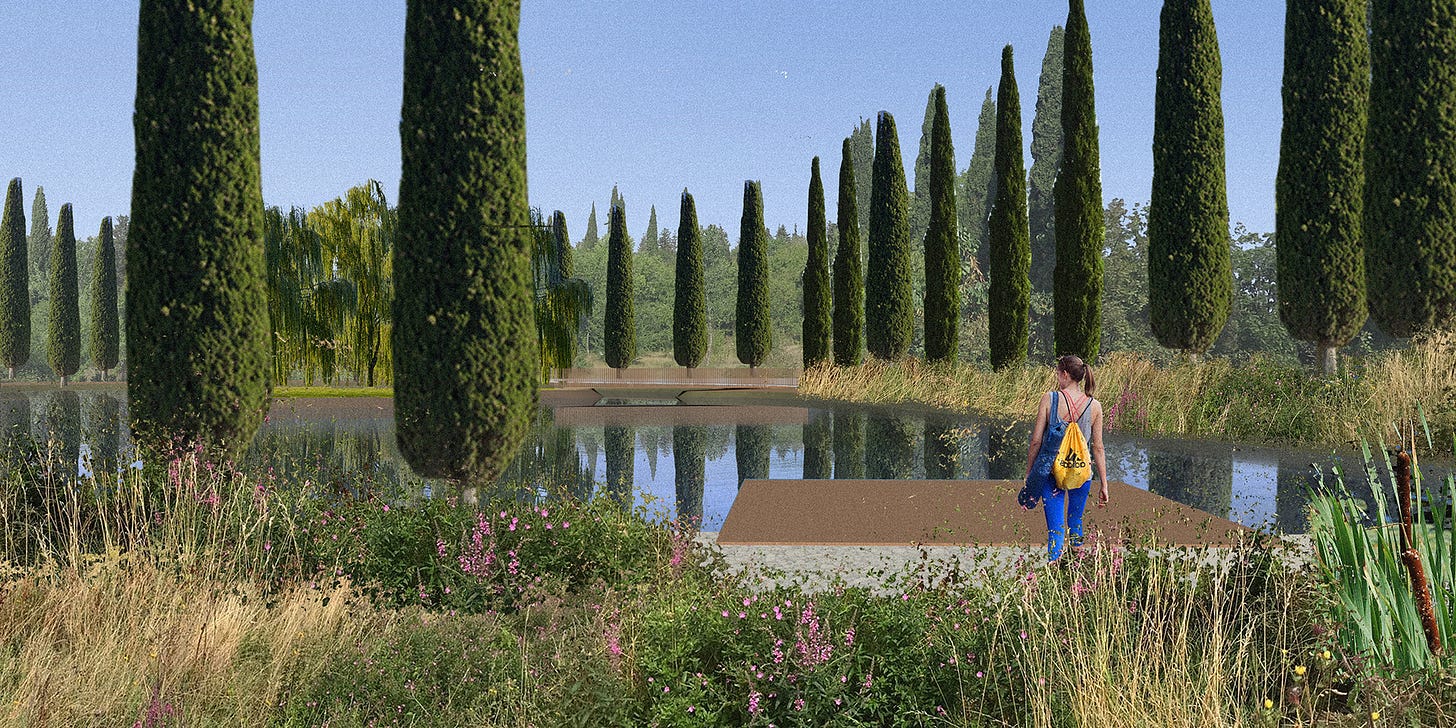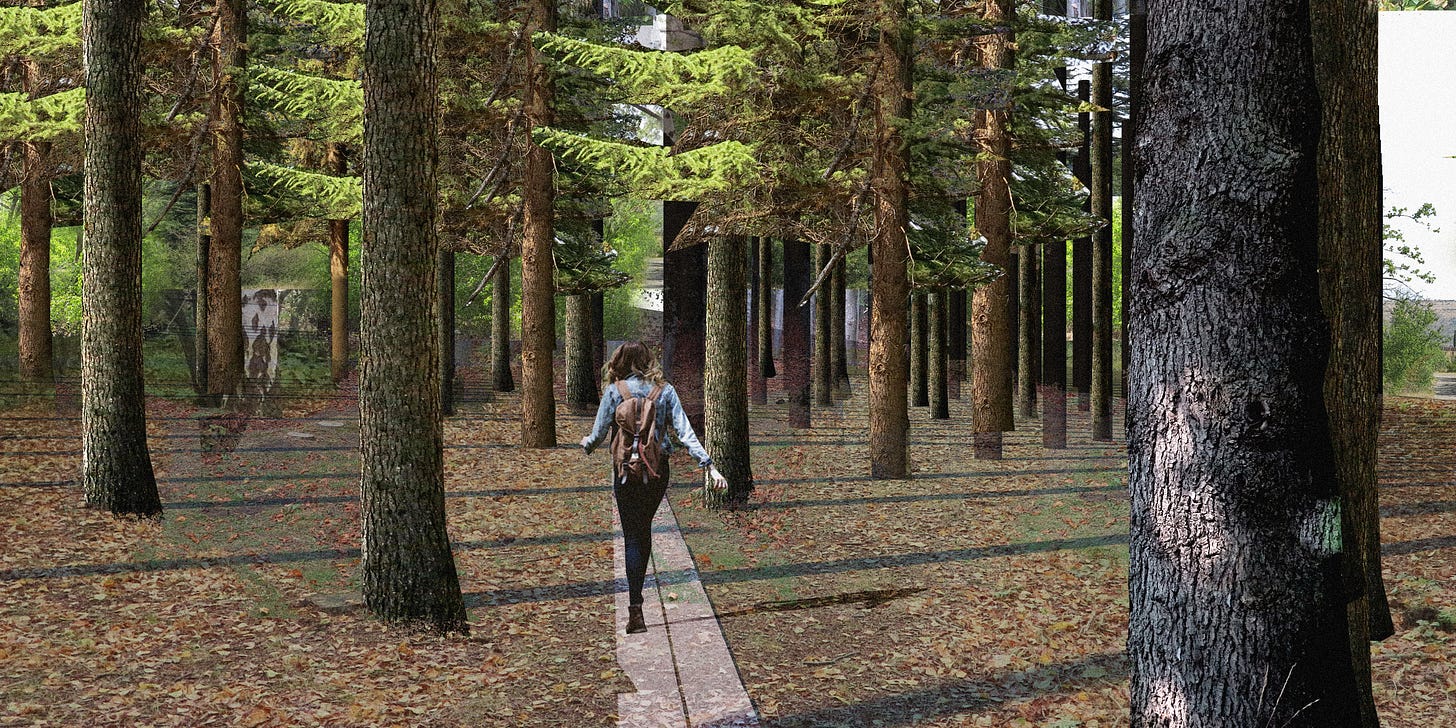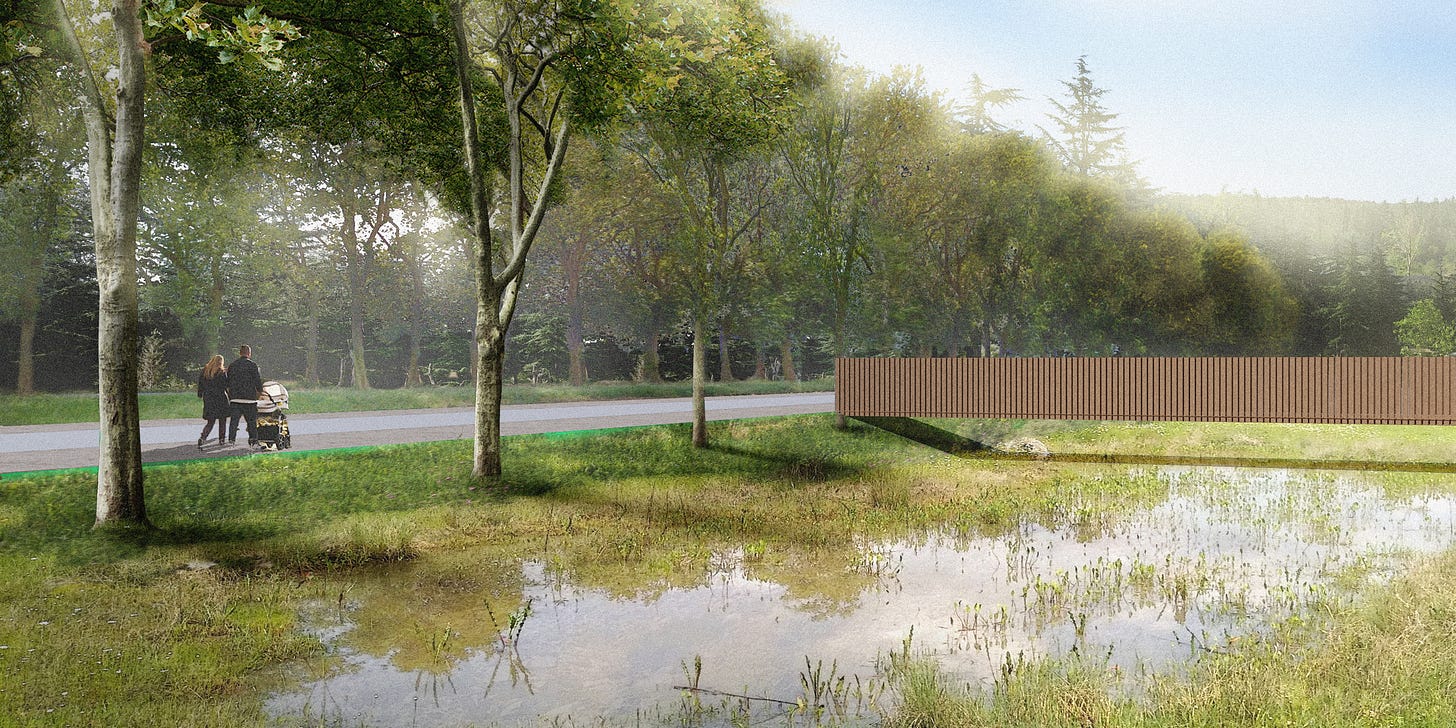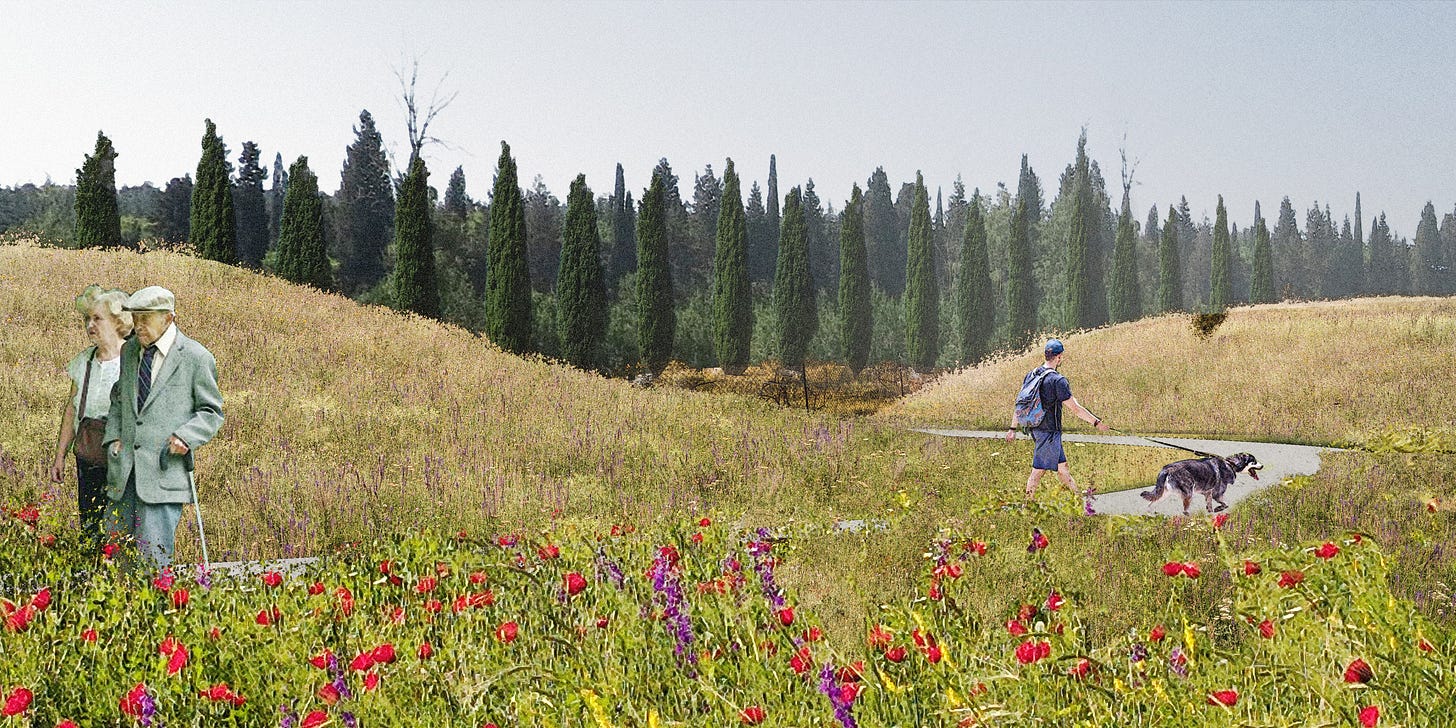In 2020, Ruderal developed a master plan for Tbilisi’s Dendrological Park. The competition prompt asked designers to rehabilitate the historic landscape and include new architectural and park programs.
HISTORY OF THE DENDROPARK
Botanist Ioseb Chodrishvili established the Tbilisi Dendrological park in 1956. He imagined the park as Georgia’s answer to Paris' Bois de Boulogne. The team transformed the former pastureland into a 300-hectare arboretum, with local and exotic species, including cork oak, blue spruce, sequoia, and Caucasian Zelkova trees. As the largest designed forest in the Caucasus during the Soviet era, the park served as an “ecological embassy” - here, scientists hosted dignitaries and cosmonauts, and they exchanged seedlings and rootstock with other Soviet botanical gardens. The original park featured an irrigation system, a greenhouse, a “dacha” for administrators, and a reflecting pond with swans. A more detailed history of the park can be found on the Safe Space Tbilisi site (in Georgian).
PRESENT DAY
The park was abandoned and vandalized During Georgia’s civil wars of the 1990s. The dacha was burned, the metal fence stolen, and the trees were cut for firewood. Without funding, the park was formally abandoned in 2006.
Today the park's vegetation and infrastructure are in poor condition. In 2020, Tbilisi City Hall announced a competition for the redesign and rehabilitation of the park.
A PARK FOR THE 21th CENTURY
Ruderal's master plan for the Tbilisi Dendrological park includes a new circulation system of multi-use trails within the park, and safer connections to the Tbilisi Sea and adjoining neighborhoods. The plan highlights how the park is an anchor in a larger greenway system connecting the Sea to the center of Tbilisi. ⠀
Ruderal's forest management plan for the Tbilisi Dendrological Park will “re-civilize” and “re-wild” the territory. The key management concept is based on adaptive ecological design, using “landscape laboratories” to evaluate and monitor the success of different approaches to re-forestation. The plan integrates passive park programs, like walking, birdwatching, and picnicking within a series of forest gardens.
The proposed forest gardens span a range of intervention and investment: some require minimal pruning and clearing, while others will be designed and built as novel gardens for testing and evaluation. These test landscapes can inform not only the evolution of the dendrological park, but also future landscape design and development in Georgia and the region. ⠀
The circulation plan will:⠀
>>Create multi-modal transportation connections on the park perimeter, pedestrian bridges, traffic signals, and zebra crossings;⠀
>>Construct safer intersections, service roads, bikeways within the park to safely bring people of all abilities to points of interest;⠀
>>Separate cars from pedestrians, and fast-moving bicycles from young children and the disabled. ⠀
>>Connect the park to the sea with a new pedestrian link. ⠀
The rehabilitated Dendrological park will be a place of relaxation, play, and exploration, reconnecting visitors to the natural ecological beauty of the hills around the Tbilisi Sea. ⠀
The plan provides sites for diverse group educational and recreational programs, such as children’s nature camps, bicycling skills, and arts festivals. These new programs will address issues of inequality in access to natural and outdoor activity, and will include programming for women, children and the socially vulnerable.⠀
New construction within the park will take a “soft” approach, minimizing impermeable surfaces such as asphalt and concrete. Rainwater will be collected on-site in bio-diverse wetlands.
The "Park Core" of the Dendrological park includes a splashpad for children, interpretive trails, a wetland allée, and a birdwatching tower. ⠀


